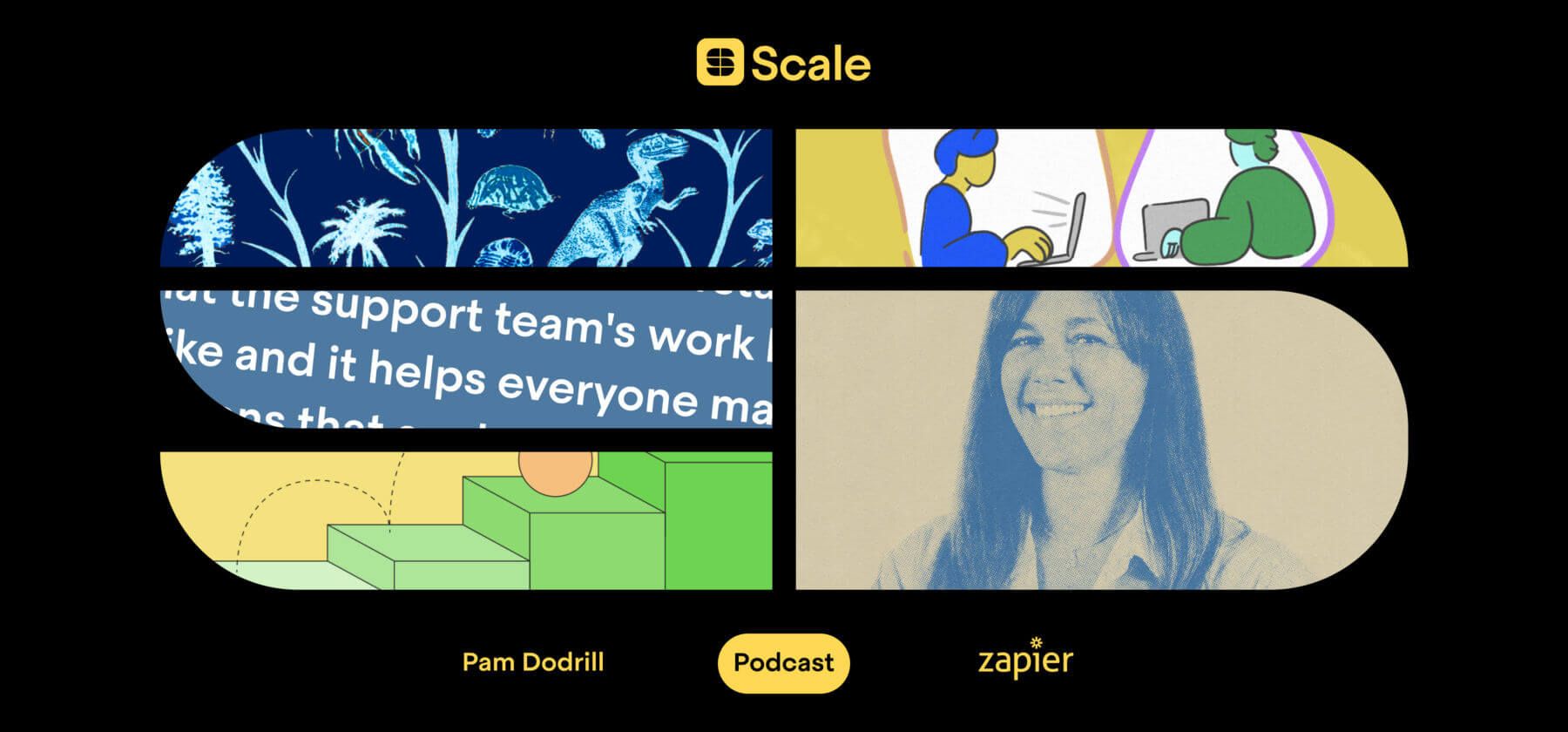
How Zapier supports 3 million users by investing in customer outcomes
When we talk about support, we often speak in numbers and percentages. How many questions did the team answer? What was the reply time? How many replies did it take to close the ticket?
This way of thinking about support is all about efficiency. If you can maximize your team’s productivity, you can help more customers at lower costs. And it makes sense: in order to be around to support your customers well into the future, you need a solid foundation for scale.
But obsessing over efficiency can mask what’s most important, and most rewarding, to support teams – actually helping customers. Support teams exist to solve customers’ problems, not to deflect them or find the fastest way to hit the “close” button. There’s no point in answering a customer’s question one day, only to have them come back unsatisfied a week later.
That’s why at Zapier, the tool that connects more than 2,000 apps, they’re balancing efficiency with a different measure of success: customer outcomes. They want to know, if a customer gets in touch with support, is the product still delivering the desired results 30 days later?
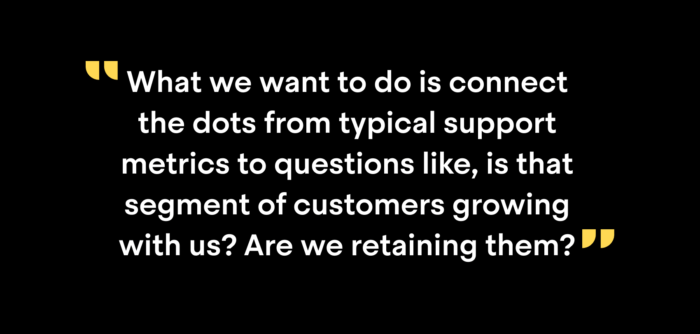
Championing this strategy is Pam Dodrill, Zapier’s VP of Customer Support and Success, whose team works with the company’s more than 100k paying customers and 3 million users. For Pam, it all stems from a long-held belief that investing in the customer’s success will chart a direct path to the company’s. In her own words, “When you take care of your customers, the revenue comes.”
Pam is a seasoned support leader with a resume that reads like a who’s-who of Silicon Valley greats. Over her 25-year career, Pam’s dedication to her customers has been the backbone of sustainable growth at companies like Salesforce, Zendesk, ServiceMax, and now Zapier.
In the return of the Scale podcast, Pam details her support philosophy and the investments she’s making to drive better customer outcomes, for the long term. Listen to the full episode above or get Pam’s key takeaways below.
This is Scale, Intercom’s podcast series on driving business growth through customer relationships. If you enjoy the conversation and don’t want to miss future episodes, just hit subscribe on iTunes, stream on Spotify, or grab the RSS feed in your player of choice.
The evolution of customer support
For many years, customer support was regarded as little more than a cost center. Companies did everything they could to minimize costs, from outsourcing frontline teams, to implementing needlessly complex phone trees, to simply making customers wait to hear back.
Although progress has been slow, the tide is turning. Companies are waking up to a new reality – one that recognizes good support is good business. In a world of infinite choice, unhappy customers, both business buyers and consumers, can easily walk away. NewVoiceMedia (now Vonage) estimates businesses lose $62 billion every year as the result of bad customer service.
This shift in attitudes to support as value driver is nowhere more apparent than in the sheer number of new tools. Where Pam once had to fight to implement help docs, there are now more than 30 categories on Gartner’s 2019 Hype Cycle for Customer Service and Support – what the research firm identifies as the most critical technologies for supporting customers.
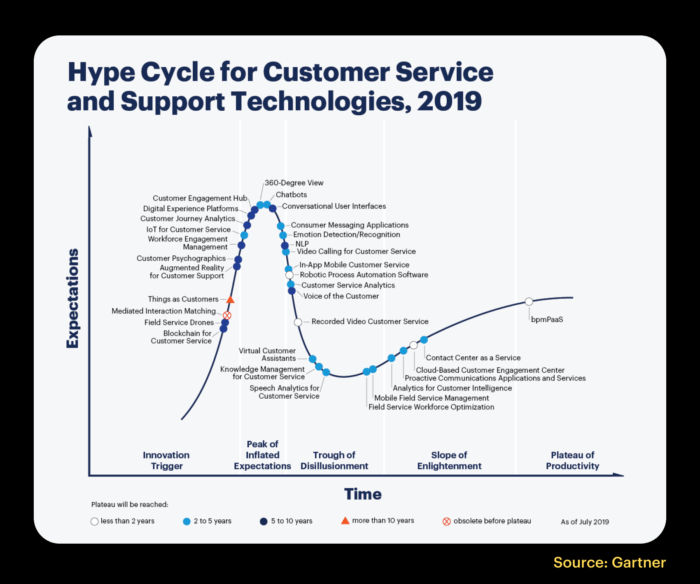
While these technological advances are impressive, Pam reminds us these tools ultimately exist in service of one thing: the customer. And the key to helping customers be successful is reducing friction, in both your service channels and your product. As Pam tells it:
“What’s really cool when I think about the different channels and the ways customers want to communicate with companies now is that [companies] have actually adopted those things. It’s become a better approach for them. [Customers] just want to use the solution. They don’t want to have to figure out how to use the solution and troubleshoot for the solution. Even thinking about this in terms of your product development, if you’re taking care of your customers and removing the friction for them in the product, they’ll adopt and use your product toward their success.”
Taking a proactive approach to customer outcomes
Support leaders know this well: customers don’t suddenly become unhappy. By the time customers reach out to support, they’ve likely exhausted their options. They’ve tried to fix the problem themselves. They’ve searched your help center. They’ve probably even visited your community forum.
That’s where Pam sees a massive opportunity – to move from a reactive to a proactive approach. Rather than waiting for frustrated customers to come knocking, Pam’s philosophy has the team monitoring for early warning signs. Are customers adding more users? Are they adding more Zaps (integrations between apps)? Are they using the product more?

It’s an effective strategy for building customer loyalty. Just look at hotel chain Ritz-Carlton, which is legendary for their five-star customer service. For them, proactive outreach is part of the job. Every employee is empowered to spend up to $2000 on a guest, whether that’s overnighting a forgotten item or sending a complimentary birthday cake and champagne.
At Zapier, these are exactly the kinds of proactive outreach, albeit at internet scale, that Pam has planned. She explains how these moments turn key business milestones like renewal into a no-brainer for customers:
“I want to think about altruistic proactive outreach. So, for the 10 times I may interact with the customer throughout a year, regardless of the channel, nine of those 10 times, I should be sharing information I think is important to them and will help them, whether it’s product-based, a use case, a new feature, whatever it might be. And that 10th time might be the renewal. But if you really get into understanding your customer’s perspectives and what they’re trying to achieve, then renewal should not be a huge milestone in the conversation.”
Empowering a remote support team
Great support starts with having a team that’s motivated and deeply connected, to each other and to their customers. But at many organizations, this can feel more like an elusive dream than reality. Add to it the growing pains that have accompanied the rapid shift to working from home, and it’s no wonder 74% of support leaders are seeing a decline in team morale.
At Zapier, the team is no stranger to working remotely (try 100% distributed with 300 employees in 17 time zones and 28 countries 😅). A long-time champion of remote work, Pam has a keen sense for what support reps need to stay incentivized and excited to help customers. Her advice can be distilled into what she calls the “five points of employee motivation”:
- All-hands support: Every person at Zapier spends time interacting with customers. The result: company-wide empathy for customers and the support team.
- Employee empowerment: When resolving customer issues, individuals on the support team have the autonomy to make their own calls.
- Transparency and collaborative decision-making: Everyone on the support team has a window into and voice in how decisions are made.
- Diversity and inclusion: Along with having a top-line metric for recruiting and retention, Zapier gave every employee funds to support Black Lives Matter.
- Strong online social connection: Making time and space for the support team to develop rapport and have fun outside of their day-to-day work.
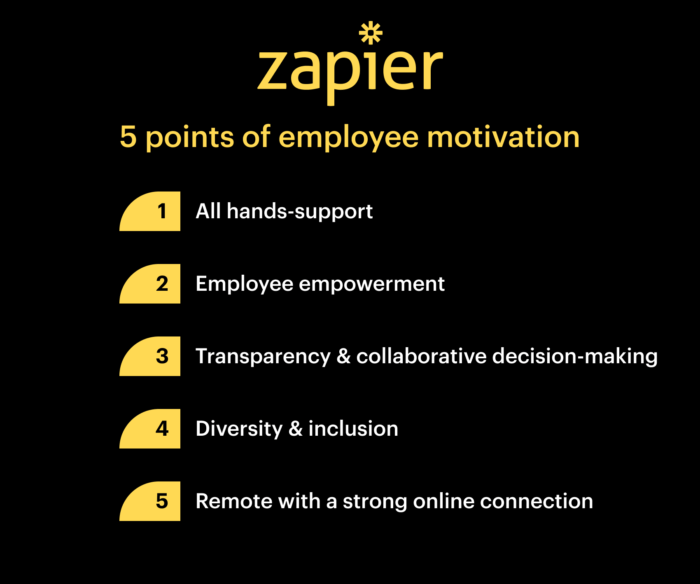
Employee empowerment can be a difficult one to strike the right balance on. Support leaders need to enable teammates to drive to the right customer outcomes while also creating avenues for constructive feedback. For Pam, this all comes down to one thing: encouraging everyone on the team to treat the business like it’s their own.
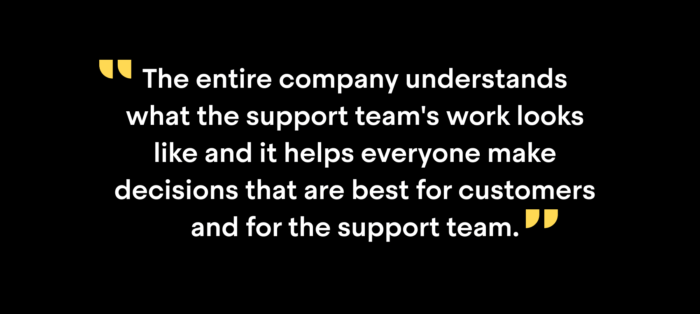
“What I found is when you give [the team] that empowerment, there is a line of accountability that they hold and they make really good decisions. I ask the team to treat it like it’s their business, their book of business. How much money do they want to spend [on refunds or credits]? I also think that having transparency around it and communication are key. What are the financial implications? And just having that type of transparency will help those conversations go really well, too.”
You can also read a full transcript of the interview which has been lightly edited for clarity.









